The fabulous and legendary Katana. Ok, that may be a little exaggerated, but it is true that there are many secrets around the Katana and that it also fascinates the western world. Katana means as much as sword. The way it is forged is unique in the whole world, even if the european (German) swords were also quite superior at the same time (according to another source). However, with the limitation that one can hardly compare the swords. The European swords are cut and thrust weapons, but the Katana is mainly a cutting weapon! This also presupposes a completely different handling of the weapons.
Katana are very sharp! Swords. This requires a special hardness. However, on the other hand, they are also very flexible, they have to be, otherwise they would break very quickly. But this is a contradiction that is resolved. However, an error in production means that the weapon is unusable and breaks.
I had the pleasure to attend a special lecture at the university, which dealt scientifically with the Katana forging art. At the end there was also the possibility to see Katana and a sword demonstration. I use this to finally publish a small article, but unfortunately the Katana and the demonstration are in real of course better than just a bad photo.
The Japanese lecture was held with English translations by Professor Amano, who himself was only shown some techniques after years of accompanying a blacksmith. That’s right, just some secrets. Until today one doesn’t know exactly how a Katana is forged, because the secret is strictly guarded and in addition there are still deviations between the forging schools. The training also takes years, and it is quite possible that you can only watch the first few years more or less before you start yourself. And only the best will continue to be privy to the secrets. Today there are only about 300 swordsmiths left in Japan.
What should certainly be known is that the katana is not moulded, but folded. For this purpose, steel fragments are layered together, melted and formed into shape. This block is then notched in the middle, folded and joined together. This process is repeated very often, resulting in a piece of metal consisting of countless layers. This piece is then forged to length until the original shape of the katana is formed. But now comes something that was not explained in the lecture (possibly unknown). Such a katana would be either rigid/sharp or flexible, not both. Therefore, a katana consists of 2-4 different types of steel, which are forged together to form a flexible core. However, the explanation of the jump of the single steel block to the combination was omitted, as well as how to recognize and then also produce the different steel types.
So now we have another important point which was also new to me. The steel. With modern steel it is not possible to forge a katana. This steel is not flexible enough, so that such a katana breaks easily and is unusable. This steel must be Kera (Tamahagane). For this, steel sand is used as raw material and the process is not suitable for mass production and consumes a lot of wood/coal. Until the Meji restoration, this was steel production in Japan, then it was replaced by Western mass production and finally ended in 1920, but this also depleted the reserves for the forges. In 1977 the demand was made to restore this steel and since 1980 there have been experiments in small scale production. This kind of steel is also still an unknown factor and hardly understood.
Quenching the hot Katana pattern is also an art and an important factor. This is also a fire trial for new blacksmiths, one mistake and the Katana will already burst in production. A clay paste (mamon) is applied to the still hot katana, which can vary depending on the school of blacksmithing. It is important that this layer is thinner at the cutting edge than at the back. This, together with the various steels, creates the characteristic katana curvature. In addition, this layer of clay later also defines the pattern (hamon) on the edge of the blade. The cooling process itself must then also be handled correctly so that the katana does not shatter due to the material stress (due to the rapid temperature change). The process changes the conformation of the inner steel structure.
In other words, if someone outside of Japan claims to be forging real katana, this is very doubtful. On the one hand, he must have spent years in teaching himself and really have been introduced to art and have a Tamahagane steel source. Both together rather unlikely, whereby I would gladly be advised.
Finally it has to be mentioned that the Katana is not only a weapon, but also a symbol and soul of the samurai. This concept continues to exist in Japanese culture and language. But trying to explain this with my limited knowledge alone would totally go beyond the scope here and in the end every reader would only have more question marks…..
Here few pictures, since this entry is rather text rich.
Here you can see that the blade is only fixed by a small plug in the handle.
After the lecture the sharpness of the swords was demonstrated on bamboo mats, which was cut into individual parts with clean(!) cuts. A little bit of Miyamoto Musashi’s two-sword style was also shown. However, I made videos and hardly any photos. Since these are too large, I don’t show them.
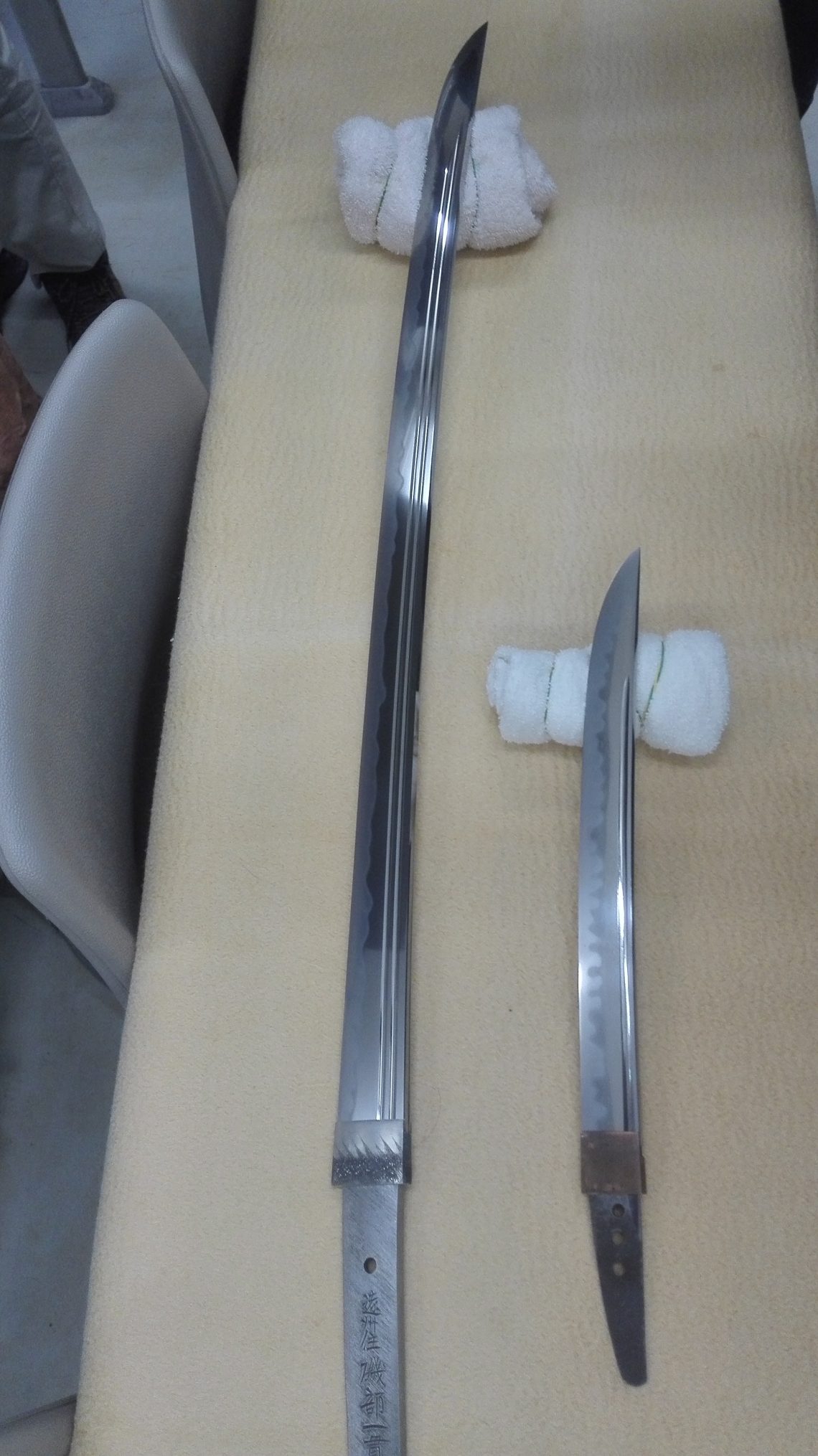


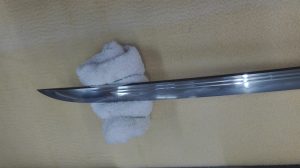

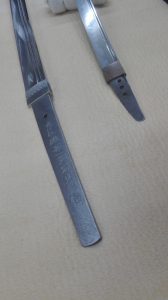


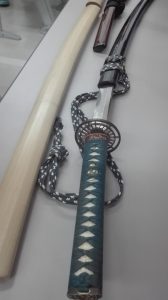
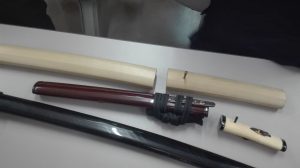

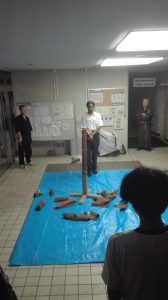
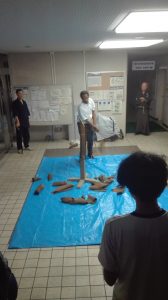
No Comments